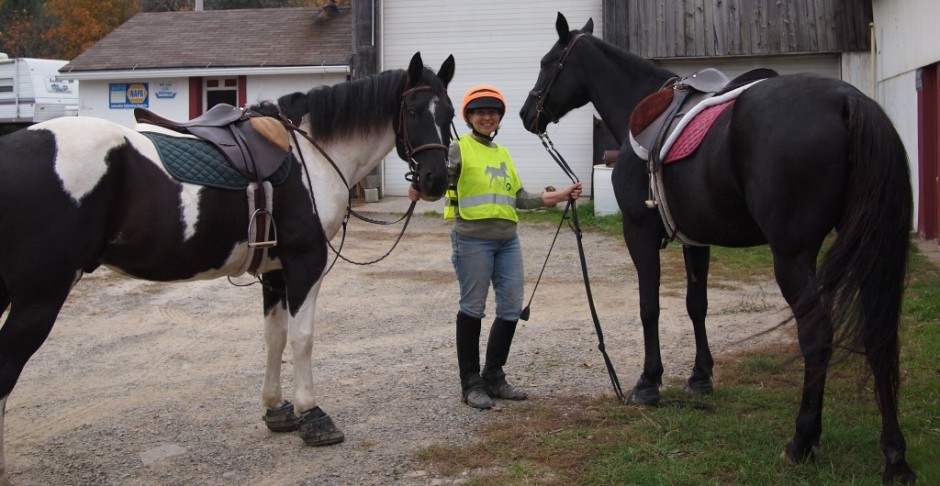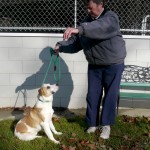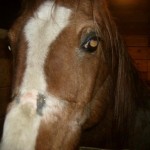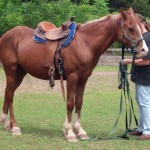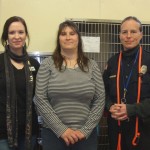Route 220 winds its way through the Endless Mountains weaving in and out of farmlands, skirting the Susquehanna River and darting in and out of the woods. The car’s engine hummed as I drove towards the Bradford County Humane Society. Just before reaching the village of Ulster, I turned into the shelter’s gravel driveway. The November sky set a grey backdrop for the shelter, and the sun glistened on the steel, chain linked enclosures forming the outside dog runs. I stepped out of the car, walked down a slight incline passing a woman walking a dog, entered the Humane Society’s office, and found Anne Shaffer ready to give me a tour of the shelter.
“Let me start by introducing you to Jennifer Spencer our Coordinator,” said Anne indicating a tall, young woman with dark, brown hair.
“Nice to meet you,” I said extending my hand. “What do you do here?”
“I’m the Coordinator for the animal shelter. I do promotion through outreach programs in schools, fundraisers and publicity,” replied Jennifer.
“How do you do that?” I asked.
“I visit the local schools with the Humane Officer. We teach children how to help animals, care for their pets and be responsible pet owners. This year I assisted high school seniors with their senior project which was collecting food and pet items for the shelter. I also work with the Chamber of Commerce, local Rotary Clubs and libraries to let people know what the animal shelter does. I provide news releases for local papers and keep our website and Facebook pages up to date by writing weekly articles. Also, I plan and coordinate fundraisers for the shelter,” replied Jennifer.
“It sounds like you are very busy. Have you been here long?” I asked.
“About year, I grew up in the area but moved away for work. I worked for several years in California as a marketer,” replied Jennifer.
Anne and I left the office and entered the area that housed the indoor dogs. The enclosure contained three rows of cages filled with dogs. As soon as we walked into the enclosure, all the animals started barking for attention. Each dog had a plastic covered information tag clipped to the wire gate of their pen. Anne stopped in front of a cage housing a small beagle.
“This dog is Lindy. She came in about a week ago with a long gash across her thigh. We took her to the vet for stitches. She’s a sweet dog,” said Anne.
“She’s very calm,” I said watching the dog wag her tail.
“She came in as a stray, but so far nobody has called about a lost dog. The shelter has been swamped with strays and lost dogs since the flood.” said Anne.
“That’s sad,” I replied.
“It’s hard. Many animals were lost during the flood and became strays. Others came to us because the owners had to find other housing or couldn’t afford to care for their pets,” said Anne.
We moved on to the next aisle passing dogs jumping up against the wire enclosures, barking and wanting to get out. Most of the dogs were large to medium size; many looked like Rottweilers or bulldogs.
“This dog came here because he’s not good with kids and this one because he kills poultry.” said Anne slowly walking down the aisle. She stopped at the cage of a large brown dog. “This dog has a chip implant but the owner moved to another state and even though we’ve sent letters there hasn’t been a response.”
We continued on down the line of cages. Anne stopped in front of a cage holding a white dog with brown ears. The dog’s teats formed a double line down her pink belly making her look like she was nursing five or six puppies.
“This is Price. She’s the sweetest pit-bull you’ll ever meet. Price came in as a stray and was used in a puppy mill. The owners keep her pregnant breeding pups,” said Anne opening the gate and reaching in to pet the dog.
“She’s very friendly. Does she have papers?” I asked.
“No, most of the dogs here don’t have papers because they came in as strays. Sometimes, if an owner brings in a dog they will have registration papers, but usually not,” replied Anne.
“Do many owners bring in their dogs for adoption?” I asked.
“We only take owner surrendered dogs if we have room. We are mandated by law to take in stray dogs. If there is an empty cage we will take in other dogs but the strays come first,” replied Anne.
“That must make it difficult for people who can’t keep their dog,” I said.
“We refer them to other shelters in the area or suggest they take out an ad in the paper. Right now we’re full. The shelter doesn’t euthanize dogs so a space will only open up if someone adopts a dog,” she said.
Anne locked Price’s cage. She opened a metal door and we stepped onto a cement walkway leading to the kennels housing the outside dogs.
“Some dogs do better outside,” she said stopping at the cage for a black collie mix. “Like this dog. He’s a jumper. He can jump right out his cage if it doesn’t have a roof. Would you like to see the cats?” Anne asked.
“Sure,” I replied following Anne.
We stepped back into the building, walked past the dogs and she opened a door to the cat rooms. Inside were a few cages with cats sitting behind steel bars. Outside the cages, several cats lounged on a carpet covered cat tree; curled up or stretched out for a snooze. A glass door opened to the free roaming cat room; full of cats and no cages. The exterior walls, made entirely of glass windows, allowed soft natural daylight into the room. The ceramic tile flooring provided a clean fresh place for cats to walk, play or relax.
“That is a beautiful room for the cats,” I said.
“It’s new and wonderful. The cats don’t have to be in cages and have the freedom to roam anywhere within the room,” said Anne.
After our visit with the cats, we again walked by the jumping and yelping dogs toward the office. Just outside the office door stood the woman I had pasted earlier in the day walking a dog.
“Do you work here?” I asked glancing down at the young dog she had on a leash.
“I do. My job is training the dogs,” replied Susan Meas.
“What do you teach them?” I asked.
“My main objective is for the dog to listen to me and walk on a leash without pulling. I work on simple commands like come and sit. Most of the dogs are strays so none of us know what the animals have been through. I try to connect with the dog and find out what the dog knows,” replied Susan.
“Have you been training dogs for long?” I asked.
“I’ve been training dogs for 26 years, mostly obedience and agility training,” replied Susan.
Anne and I stepped back into the office where Jennifer spoke on the telephone. She hung up and I asked, “Its important helping dogs and cats, but what about other animals? Do you rescue horses?”
“Horses and other livestock are rescued by the shelter in situations of abuse. However there isn’t space for large animals here; although, currently the shelter is looking to rent a barn. Horses are placed in foster homes at a local farm until the animal can be adopted out. The Humane Officer at Bradford County Animal Shelter is Lara Hawbaker. When the shelter gets a call concerning livestock, Lara goes out and evaluates the situation,” replied Jennifer.
Lara Hawbaker wasn’t at the shelter, so I arranged to come again in a couple of days to speak with her. When I came back, I passed Susan Meas again working with another dog. I stepped into the office and met a tall, woman dressed in a law enforcement uniform with a badge.
“So, how do you help horses?” I asked.
“I respond to complaints of abuse. The first thing, I do is speak to the horse’s owner. I give them pointers on horse care and how to get the animal back in shape. My primary focus is on education and making sure the horse gets what it needs. Many people simply don’t understand how to care for a horse,” replied Lara.
“I’m sure the financial crisis has placed an increased burden on horse owners,” I said.
“That’s true; the last two years we have seen an increase in horses not being feed. The flood has also drained people’s finances, not to mention the price of hay increasing. This year has been a poor hay season with all the rain. Also, the gas companies in the area have been buying hay for reseeding which has driven up the cost of hay. All of these things have an impact on horses,” said Lara.
“If the owner doesn’t or can’t care for the horse what is the next step?” I asked.
“Then the animal is confiscated by court order and placed in a foster home. The case goes before the Judge. If he rules the animal should be taken away from the owner, then the horse is awarded to the Humane Society and becomes available for adoption to a safe home,” said Lara.
“Have you had any cases recently?” I asked.
“We had an owner in Granville unable to care for her horse, a 20 year old Arab stallion named Sham. He had his halter embedded in his head, was tied to a tree and starved,” said Lara.
“That sounds horrible,” I said.
“It turned out ok. The case didn’t go to court. I spoke with the owner and she agreed to turn the horse over to the Humane Society. The shelter had the horse gelded, rehabilitated and a caring family adopted him,” said Lara.
“Do you find that people call in with false complaints?” I asked.
“Most of the complaints we receive are taken by phone. The first thing I do is call the person involved and determine what’s going on, and then I go out to investigate. As part of the investigation I take pictures and notes which are placed in my record books. One book is for ‘Real Problems’ and the other I call my ‘Wasted Time’ book for unfounded complaints. Sometimes a person has a dispute with their family or neighbors and will call the shelter with invalid complaints. They don’t realize that every time I go out to investigate a complaint it cost the shelter time and money,” replied Lara.
“What are the laws protecting animals in PA?” I asked.
“All animals need fresh food, water and veterinary care. They must have access to clean shelter which is sufficient to keep them dry, protected from inclement weather and enable the animal to preserve its own body heat. In winter a horse without shelter looses a lot of body fat due to shivering attempting to keep itself warm,” said Lara.
“Are there requirements in PA for the size of pasture for horses,” I asked.
“Unfortunately in PA there are no laws concerning pasture size. I’ve seen horses kept in too small an enclosure without any pasture, which is hard on a horse’s health,” replied Lara.
“Are there any other problems which you have come across? I asked.
“One of the main problems the shelter deals with is the over breeding of animals. In today’s economy there is a surplus of horses on the market. Many breeders find they can’t sell their animals and end up with a lot of horses or dogs that they can’t afford to care for and feed. Dogs end up in the shelter and horses end up at auction headed for slaughter houses,” replied Lara.
“My daughter and I visited an auction house in Unadilla,” I said.
“That’s a big livestock auction. It’s against the law to sell emaciated, sick or lame horses but many auction houses do. Local horse dealers go across state lines and bring back skinny, sick horses to sell. I worked at Pimlico racetrack in Maryland and saw how horses were used in the racing industry. The racing industry uses auction houses as a way of unloading unwanted, sick and injuried horses which end up at slaughter houses in Canada or Mexico,” said Lara.
“Are you from Maryland?” I asked.
“I worked in Maryland with horses at Camp Greentop located in the Catoctin Mountain National Park. The camp is run by the Department of Camping and Therapeutic Recreation at the League for People with Disabilities. I trained volunteer college students how to help handicapped and mentally challenged kids work with horses. I also exercised President Reagan’s horses when he was at Camp David,” replied Lara.
“That must have been a wonderful experience,” I said.
“It was,” Lara said pausing for a moment. “If there is one message I could tell people it would be: Think about what you’re doing before you do it and think about the animal’s needs.”
I said farewell to all of the wonderful people at the Bradford County Humane Society where I met truly dedicated people helping animals. Even though the day was grey and overcast, I drove home with the warm feeling that there are good people working to make the world a better place.
